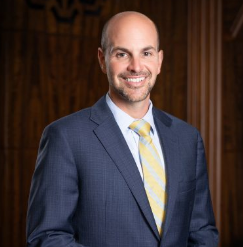By Harold C. Ford
The details of a massive, several hundred-million-dollar plan to rescue Flint Community Schools (FCS) from its decades-long descent are contained within a Memorandum of Understanding (MOU) just made available to East Village Magazine from an unidentified source. The plan, titled Flint Education Continuum, (FEC) includes three levels of government, several Flint-area nonprofits, and all three of Flint’s major institutions of higher learning.
All of the 17 parties named in the MOU have yet to sign the document.
Funding for the project comes from three major sources—the Charles Stewart Mott Foundation, Flint Community Schools, and the State of Michigan. With a grant, the Mott Foundation would “conditionally” match the State of Michigan’s $45 million capital appropriation for the construction of a new high school. Also, with a grant of up to $55 million to $75 million, C. S. Mott would “conditionally” match FCS’s contribution of $75 million derived from a combination of bonding authority and federal funds.

Flint Community Schools Administration building. (Photo by Ed Custer)
In the MOU, C. S. Mott additionally commits to another $100 million ($10 million per year) over 10 years for the new schools in support of community education, afterschool programs, and college/career technical education pipeline from Mott Community College starting in the third grade.
Thus, potential funding from the aforementioned sources alone totals $320 to $340 million. Contributions from other partners in the project would likely push the price tag for the initiative into the $400 to $500 million range.
The purpose of the project, according to the MOU, “is to develop and expand the framework for an education continuum in Flint which ranges from birth to college and career…” It aims to “leverage federal, state and local dollars to create an exponential impact that goes beyond schools to whole neighborhood revitalization.”
A centerpiece of the FEC is construction of new schools—four new elementary schools and a new high school—and the renovation of two buildings, one for elementary students and the other for middle school students. All buildings would be operated by FCS and located within the City of Flint.
The cost of four new elementary schools, with a capacity of 500 students each, is projected at $25 million each or $100 million total. Durant-Tuuri-Mott would be renovated at a cost of $20 million.

Durant-Tuuri Mott school on University Ave near Kettering University. (Photo by Tom Travis)
The site of a 1200-student middle school is expected to be a renovated Doyle-Ryder building or one of the existing high school buildings, also to be renovated. The new high school would serve up to 1800 students where “juniors and seniors would be dual enrolled at MCC (Mott Community College).”
All buildings, new or renovated, would be owned by FCS.
A 2021 FCS Strategic Plan would be extended to a 10-year plan “with milestone reviews at the 3-, 5-, and 7-year marks.” The strategic plan would “include a strategy to address its facilities and infrastructure needs…”.
Plentiful partners
Other partners in the project would include: the State of Michigan; the City of Flint (City); Mott Community College (MCC); the Genesee Intermediate School District (GISD); Flint & Genesee Group/Genesee Area Focus Fund (FGG; formerly Flint & Genesee Chamber of Commerce); Concerned Pastors for Social Action; Community Foundation of Greater Flint; United Way of Genesee County; Ruth Mott Foundation; University of Michigan-Flint; and Kettering University.
The project anticipates the support of Dan Kildee, U. S. Congressman for Michigan’s Fifth District, and Jim Ananich, State Senator for Michigan’s 27th District.
Response from Ridgway White:
“It’s not my MOU, it’s the community’s MOU,” Ridgway White, C. S. Mott Foundation’s CEO, declared in a phone conversation Wednesday with East Village Magazine (EVM).

Ridgway White, President and CEO of the C.S. Mott Foundation. (Photo source: Mott Foundation website)
White said he pounded out the first draft of the MOU on his own computer, despite a small army of employees at his beck and call. However, he noted the eighth and current iteration of the MOU includes input by many members of the community.
“I got to know Ridgway during the (Flint Farmers’) market move, and I know that he cares deeply about his hometown and wants to work with, not just for, the members of our community,” observed Richard Ramsdell, a retired career FCS educator and former manager of Flint Farmers’ Market.
White told EVM the FEC, inspired by Flint’s tragic water crisis, has been in the works for at least five years but got waylaid by events such as the COVID-19 pandemic, and changes in the FCS superintendent’s office. He said his confidence in FCS leadership has been buoyed by the ascension of Anita Steward, a product of FCS, to the district’s top position as superintendent.
White said the primary foci of the plan are education and employment. Thus, he explained, it is critical to focus on K-12 education.
He said he is hoping to rally the support of all parties listed in the MOU toward the goal of getting their signatures on the document. White said the Mott Foundation will soon launch public engagement sessions to elicit community input about the plan.
Former Central-Whittier campus targeted for new high school
The site of the now-abandoned Central High School/Whittier Junior High School campus, on Crapo Street. near the Flint Cultural Center (FCC), is clearly designated as the location for construction of the new high school.

Shuttered Central High School. (Photo by Tom Travis)
Deemed an ideal location by many because of its proximity to MCC and the FCC, it nonetheless raises oft-expressed concerns by neighboring residents about matters such as pedestrian and vehicular traffic.
Allaying such concerns of area residents about the construction of a new 1800-student high school (and other schools) would be the responsibility of the City. According to the MOU, the City would be charged with:
- Adopting strategies to improve neighborhoods;
- Implementing homeowner rehab and blight elimination programs;
- Provision of strict code enforcement;
- Accessing CDBG (Community Development Block Grants) and other funding to support these projects;
- Provision of community policing.
Plan is student-centered
The MOU is rife with funding and programs that make clear FCS students are at the center of the FEC. Examples include:
- State and federal funds are to be strategically used “to address learning loss (and) support social-emotional learning.”
- Practices and policies are to be adopted “reflective of a student population that is experiencing intergenerational poverty and a host of adverse childhood experiences.”
- The plan aims to “increase the culture of coming to school all day, every day…”
- Federal funding is to be used “to reduce class sizes.”
- MCC will be charged with developing the aforementioned “early college/career technical education pipeline starting in the third grade.”
- Crim is to provide ‘intensive mentoring…”
- Support is found in the FEC document for new or already-existing programs such as career technical education (CTE), Early Middle College, the Genesee Career Institute, Genesee Opportunity, Flint Promise, College Savings Accounts, Michigan Model for Health, Teen Quest, Youth Quest, attendance intervention training as needed, and high-quality early childhood programs.
- The State of Michigan would be tasked to “find ways to provide free internet access to all students.”
Elimination of debt
FCS has been plagued with debt, approximately $18 million at present according to the MOU, that is largely the result of an approximate $20 million loan taken out by the district in 2014. The MOU indicates that the State of Michigan “will work (to) restructure and/or pay off the existing FCS private debt.”

FCS is currently working to eliminate its debt under a revised Emergency Deficit Elimination Program (EDEP) supervised by the Michigan Department of Treasury.
Rescue plan
The plan, yet to be voted upon by the FCS Board of Education, could help rescue its school system from a decades-long descent that, in addition to its massive debt, is measurable:
- The latest student count reported to the FCS board on April 14 was 3260 students, down from nearly 45,000 in the mid-1960s; about two-thirds of Flint students actually attend other area schools.
- From Jan. 2019 to Jan. 2020, 84 FCS educators departed the district taking with them over a thousand years of experience in Flint schools; the FCS Board of Education stopped reporting on departures in 2020 at its public meetings.
- The district has yet to adopt a strategy to rid itself of at least 22 closed buildings and 16 vacant properties.
- Every one of the district’s dozen campuses that remain open have serious infrastructure needs.
- Standardized test scores of FCS students are among the lowest in the county.
- FCS is in the final year of a three-year partnership plan imposed by the State of Michigan to improve test scores by 10 percent, reduce suspensions by 10 percent, and increase student attendance to 90 percent. `
Additional challenges include the residual impact of the Flint water crisis (2014-present) and the COVID-19 pandemic’s impact on delivering quality instruction.
No more excuses:
“It is an understatement to say that the magnanimous level of support described within the memorandum of understanding is unprecedented,” said Paul Jordan, former member of the FCS Board of Education. “The plan would provide the children of Flint with facilities that are the equal of any in the county, and a support system that is tailored to the needs of students growing up in a challenging city like Flint.”

“This plan probably represents the greatest challenge ever for the Flint School District’s board, administrators, teachers, and staff,” Jordan continued. There can be no more toleration in the district for poor planning, lax administration, or indifferent performance at any level.”
“The district will have to deliver real excellence, and justify the faith of the plan’s partners, funders, and the parents who entrust their children to it,” Jordan concluded.
* * * * * *
The next meeting of the FCS board is scheduled to begin at 6:30 p.m. on April 21, 2021. The public can attend the meetings virtually by registering at the district’s website.
Questions and/or comments for FCS officials can be submitted to the following internet address: fboe@flintschools.org. Also, the email addresses of various FCS officials can also be found at the district’s website.
* * * * * *
A copy of the Flint Education Continuum Memorandum of Understanding can be seen immediately below.
MEMORANDUM OF UNDERSTANDING-Draft 8 editedEVM Education Beat reporter, Harold Ford, can be reached at hcford1185@gmail.com.


You must be logged in to post a comment.